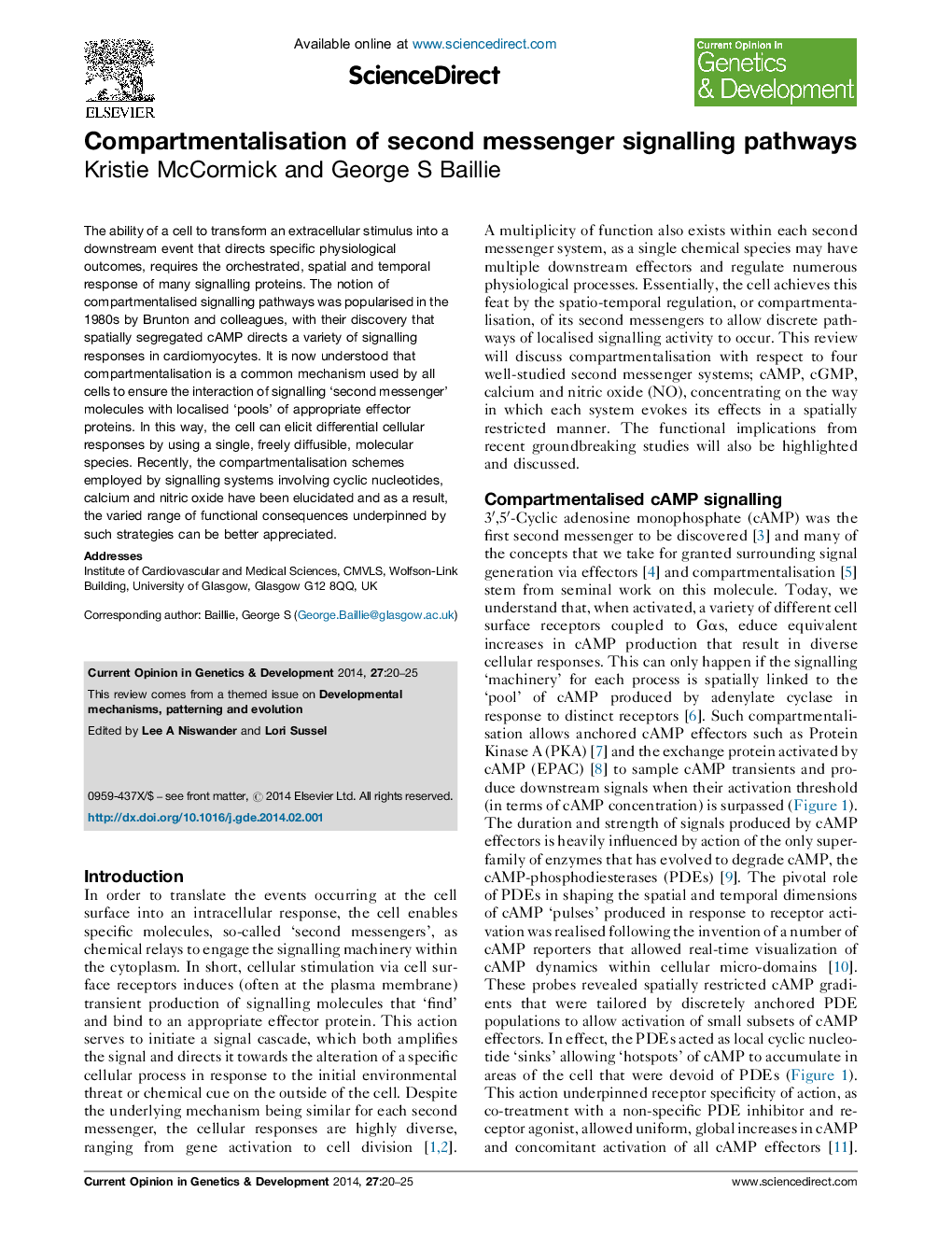| Article ID | Journal | Published Year | Pages | File Type |
|---|---|---|---|---|
| 5893446 | Current Opinion in Genetics & Development | 2014 | 6 Pages |
Abstract
The ability of a cell to transform an extracellular stimulus into a downstream event that directs specific physiological outcomes, requires the orchestrated, spatial and temporal response of many signalling proteins. The notion of compartmentalised signalling pathways was popularised in the 1980s by Brunton and colleagues, with their discovery that spatially segregated cAMP directs a variety of signalling responses in cardiomyocytes. It is now understood that compartmentalisation is a common mechanism used by all cells to ensure the interaction of signalling 'second messenger' molecules with localised 'pools' of appropriate effector proteins. In this way, the cell can elicit differential cellular responses by using a single, freely diffusible, molecular species. Recently, the compartmentalisation schemes employed by signalling systems involving cyclic nucleotides, calcium and nitric oxide have been elucidated and as a result, the varied range of functional consequences underpinned by such strategies can be better appreciated.
Related Topics
Life Sciences
Biochemistry, Genetics and Molecular Biology
Developmental Biology
Authors
Kristie McCormick, George S Baillie,
